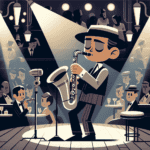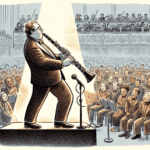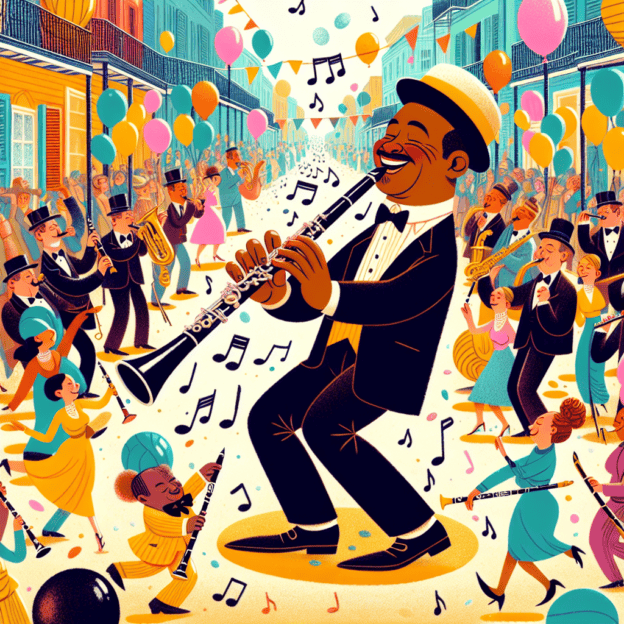The Magic of Sidney Bechet's New Orleans Jazz
When you think of New Orleans jazz, one name often springs to mind—Sidney Bechet. This talented clarinetist and saxophonist was a trailblazer in the jazz world, bringing a unique flavor to the music that has inspired countless musicians. But what sets this style apart, and how can today's clarinetists tap into that magic? Let's explore!
First off, it's important to recognize the vibrant culture of New Orleans. It's a mix of different musical traditions, and jazz is its most famous export. Bechet emerged from this lively setting, using his clarinet to express not just notes but deep emotion, painting vivid soundscapes. His style is marked by an incredible vibrato, strong melodic lines, and a very expressive use of dynamics. If you want to get into Bechet's New Orleans vibe, listen closely and you'll hear that emotive quality in every phrase.
The Essence of Bechet's Style
One could say Bechet's clarinet playing is like a colorful balloon in a parade—full of life and joy, but carefully controlled so it doesn't float away. His ability to bend notes, similar to a cat stretching in the sun, adds an extra layer of expressiveness to the music. He wasn't just playing the instrument; he was having a conversation with it and with his audience.
| Key Element | Description |
|---|---|
| Vibrato | Incredible and expressive |
| Melodic Lines | Strong and memorable |
| Dynamics | Very expressive use |
| Note Bending | Adds expressiveness |
Mastering Bechet's Technique
Now, let's talk technique. Bechet's use of the clarinet relied heavily on his mastery of breath control. He made it sound easy, yet it requires dedication and practice. Start by working on long tones while focusing on steady air support. This will help you keep your notes even, giving you more control when you start to incorporate vibrato. Additionally, explore glissandos—those soaring slides between notes that give your music a sweet, lilting quality, just as Bechet used to.
Another important aspect of Bechet's style is the rhythmic freedom he showed. He elegantly floated over the beat while still remaining grounded in that swinging pulse, which is vital in jazz. A good exercise is to listen to recordings of Bechet and try to mimic his phrasing. This can help you develop that same innate sense of timing and groove.
The Role of Instrumentation
The instrumentation of his day played a significant role in shaping his sound. Bechet often performed with musicians who played complementary roles—the rhythm section laid down the groove, while the brass and other woodwinds provided harmony and counterpoint. As you start your own musical journey, it can be helpful to listen to the sound of the ensemble as a whole, rather than just focusing solely on your part. This approach reflects the collaborative spirit of New Orleans jazz.
Choosing the Right Instrument
Speaking of instruments, the type of clarinet used can also affect your rendition of Bechet's style. While he primarily played a soprano saxophone in his later career, his early work on clarinet remains important. A quality instrument—like those crafted by Martin Freres—can make a notable difference in sound production, improving your ability to emulate Bechet's expressive tones.
Building Your Repertoire
As you practice these techniques, consider adding traditional New Orleans tunes to your repertoire. Songs like “Petite Fleur” showcase Bechet's melodic style and can serve as a perfect canvas for experimenting with your interpretation. Additionally, learning about the history of these tracks will deepen your understanding of the cultural influences that shaped this music.
The Importance of Listening and Analysis
It's valuable to engage with recordings of Bechet and other New Orleans musicians. Analyzing the recordings can give you new insights and feed your imagination, sparking creativity in your own playing. Listen to how they phrase, where they breathe, and how they express emotion through their instrument.
Embracing Creativity and Individuality
Remember that jazz is about spontaneity and creativity. Don't be afraid to insert your style into Bechet's. Explore, play around with melodies, and add personal touches, while respecting the foundations he established. After all, jazz is as much about individuality as it is about tradition.
Conclusion
Embodying the Sidney Bechet New Orleans style on clarinet is about more than just copying notes; it involves embracing the entire musical atmosphere that defines this rich jazz tradition. Pay attention to tone, expression, and context, and with practice, you'll find yourself dancing through the music just like Bechet once did. So go ahead—pick up that clarinet, let the legacy of New Orleans flow through your fingers, and make some joyful noise!







